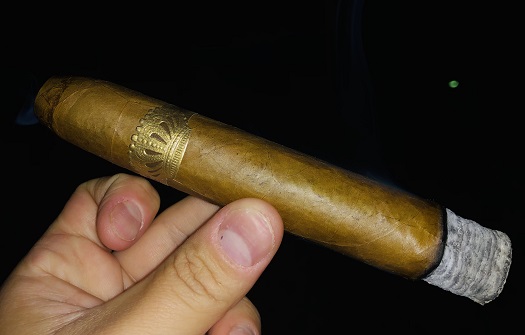
When the Brûlée offshoot of the Sobremesa blend was introduced in 2019 by Steve Saka’s Dunbarton Tobacco & Trust (DTT), rumors began to swirl that the cap was sweetened. In addition to denying this allegation, Saka used his marketing genius to recently release a “Saka’s Taste For U’rself†sampler, or—in a thinly veiled jab at his detractors—“STFU.†Every cigar in the five-pack is the original Brûlée blend in the Toro format. But the catch is, some are unadulterated, some have sweetened caps, and one is double-sweetened.
 Saka will take to Facebook Live on October 1 to reveal which are which. In the meantime, today I am reviewing the Sobremesa Brûlée in its pure form, specifically in the Gordo vitola. The cigars examined were obtained at my own expense and not part of the STFU sampler.
Saka will take to Facebook Live on October 1 to reveal which are which. In the meantime, today I am reviewing the Sobremesa Brûlée in its pure form, specifically in the Gordo vitola. The cigars examined were obtained at my own expense and not part of the STFU sampler.
As with his other blends, Saka was very forthcoming about his motivations in crafting Sobremesa Brûlée, and the tobaccos he used to carry out this vision (I wish more cigar makers were this transparent). “Sobremesa Brûlée is a recreation of the milder, shade-wrapped ligas of my early years,†he wrote in a DTT press release. “Somewhere over the last three decades, many of the classic shade cigars have become wispy, uninspiring, and rather dull to my palate. I wanted to share with others the way I remember these blonde cigars being.†He went on to write that he does not “understand the recent trend of making strong Connecticut Shade cigars… To me this seems like an oxymoron and a fundamental lack of appreciation of the enchanting characteristics and nuances of shade-grown, Connecticut-seed tobaccos. In Brûlée, I embraced this shade capa and dedicated myself to showcasing its mild, sweet, and nutty nature.â€
What makes Brûlée a Sobremesa? The recipe is a variation on the core Sobremesa blend “in which the Pennsylvania-seed ligero has been removed, the Condega seco has been increased, and the wrapper is replaced with a top-shelf grade of BW Ecuador Connecticut Shade leaf.†The binder remains a Matacapan negro de Temporal leaf from Mexico.
Originally, three Brûlée sizes were available, each ranging in price from $12.45 to $13.95: Robusto (5.25 x 52), Toro (6 x 52), and Gordo (6.25 x 60). A Double Corona (7 x 54) was added this year, along with a new limited edition variation called Brûlée Blue that (uncharacteristically, for Saka) has an undisclosed blend.
When you slide the Brûlée Toro out of its cellophane, the first thing you notice is the nearly flawless, golden-colored, silky wrapper that’s affixed to the binder in such a way that the seams are barely noticeable. Veins are few and far-between and razor-thin.
The pre-light notes at the foot are classic Connecticut Shade: sweet hay, almond, buttery oak, and sawdust. And the packing of tobacco is stiff, especially for a cigar with such a wide girth.
Speaking of girth, I appreciate Saka employing a rounded pyramid cap for this vitola. That helps limit the awkwardness that usually accompanies smoking a 60-ring gauge cigar. Once this cap is clipped, I find a smooth cold draw with—yes—a fair amount of sweetness on the lips. While I take Saka at his word that nothing artificial is at play here, I can certainly see why many people believe otherwise. To me, the sensation reminds me of rum cake, almond cookie, and cognac.
Sobremesa Brûlée is marketed as “a milder, even smoother adaptation of the Sobremesa blend that does not sacrifice its wonderfully complex flavors or aromas.†At the outset, the smoke production is low despite the smooth draw, which I attribute to the Gordo’s generous dimensions. Drawing more aggressively than I might otherwise be inclined highlights the core flavors, which include brown sugar, oak, butter, graham cracker, toast, and white pepper. The texture is bready and the body is mild-to-medium. It should be noted the ever-present sweetness on the lips likely makes a big impression on my interpretation of the flavor.
The core flavors remain consistent throughout, the exception being a ramp-up in intensity in the second third, and another in the final third. That said, one important change is the draw, which opens considerably after the first third and heralds a much-improved rate of smoke production. The other physical attributes are exemplary, especially for such a large cigar. The burn is straight requiring no touch-ups, and the ash holds firm off the foot.
The Sobremesa Brûlée Gordo takes a full two hours to smoke. Whether you think it is sweetened or not (again, Saka is insistent it is not, and I am inclined to believe him), that’s a big commitment with any cigar, and the reward must be either (1) phenomenal flavor that holds your attention or (2) several notable changes in flavor along the way. This cigar has the former. Connecticut Shade fans are bound to love it, and those who typically avoid this wrapper type are likely to find this to be an exception to the rule.
I suspect I will enjoy any of the other sizes more—perhaps considerably more. In the case of the Gordo, I’m still a fan in spite of the size, and have settled on a very admirable score of four stogies out of five.

[To read more StogieGuys.com cigar reviews, please click here.]
–Patrick A
photo credit: Stogie Guys


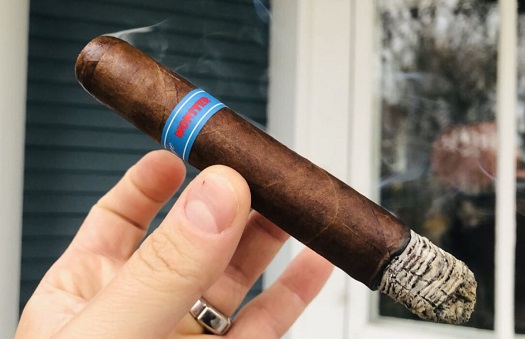
 In between, many of Johnson’s favorite characters from the horror genre were celebrated, including The Bride,
In between, many of Johnson’s favorite characters from the horror genre were celebrated, including The Bride, 
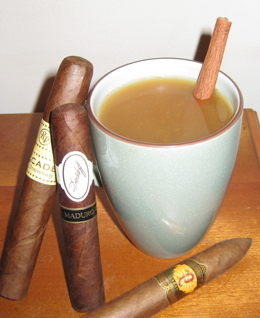
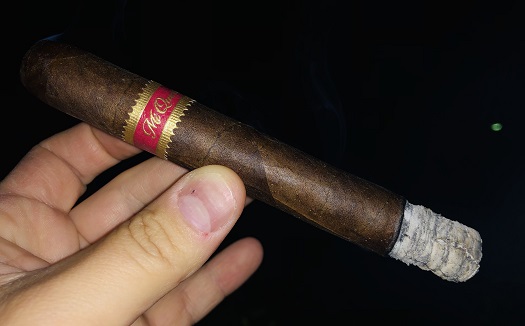
 Three summers later, in 2019, an offshoot called Mi Querida Triqui Traca was announced. The phrase mi querida translates to “my dearest,†but in Nicaragua the phrase is most often used to describe a secret mistress; triqui traca is another Nicaraguan term, this one used to describe fireworks that are bound together to form a long string of fuses and ignited in the streets to mark special occasions and holidays.
Three summers later, in 2019, an offshoot called Mi Querida Triqui Traca was announced. The phrase mi querida translates to “my dearest,†but in Nicaragua the phrase is most often used to describe a secret mistress; triqui traca is another Nicaraguan term, this one used to describe fireworks that are bound together to form a long string of fuses and ignited in the streets to mark special occasions and holidays.

 That’s easier said than done. Wunder|Lust, introduced in 2016, is made for—and exclusive to—retailers in Germany (the German prefix wunder means “wonder,†and the name also plays off the concept of wanderlust). But when I recently found a stateside RoMa sampler that included several Wunder|Lust cigars, I jumped at the chance.
That’s easier said than done. Wunder|Lust, introduced in 2016, is made for—and exclusive to—retailers in Germany (the German prefix wunder means “wonder,†and the name also plays off the concept of wanderlust). But when I recently found a stateside RoMa sampler that included several Wunder|Lust cigars, I jumped at the chance.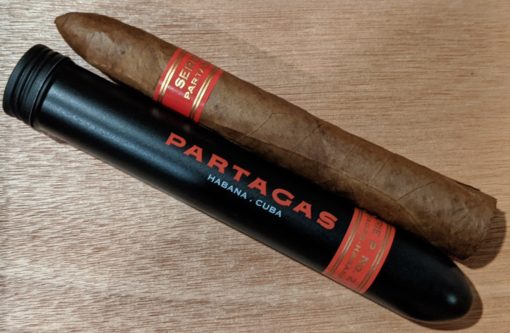

 Saka will take to Facebook Live on October 1 to reveal which are which. In the meantime, today I am reviewing the Sobremesa Brûlée in its pure form, specifically in the Gordo vitola. The cigars examined were obtained at my own expense and not part of the STFU sampler.
Saka will take to Facebook Live on October 1 to reveal which are which. In the meantime, today I am reviewing the Sobremesa Brûlée in its pure form, specifically in the Gordo vitola. The cigars examined were obtained at my own expense and not part of the STFU sampler.
 Patrick Ashby
Co-Founder & Editor in Chief
Patrick Ashby
Co-Founder & Editor in Chief Patrick Semmens
Co-Founder & Publisher
Patrick Semmens
Co-Founder & Publisher George Edmonson
Tampa Bureau Chief
George Edmonson
Tampa Bureau Chief